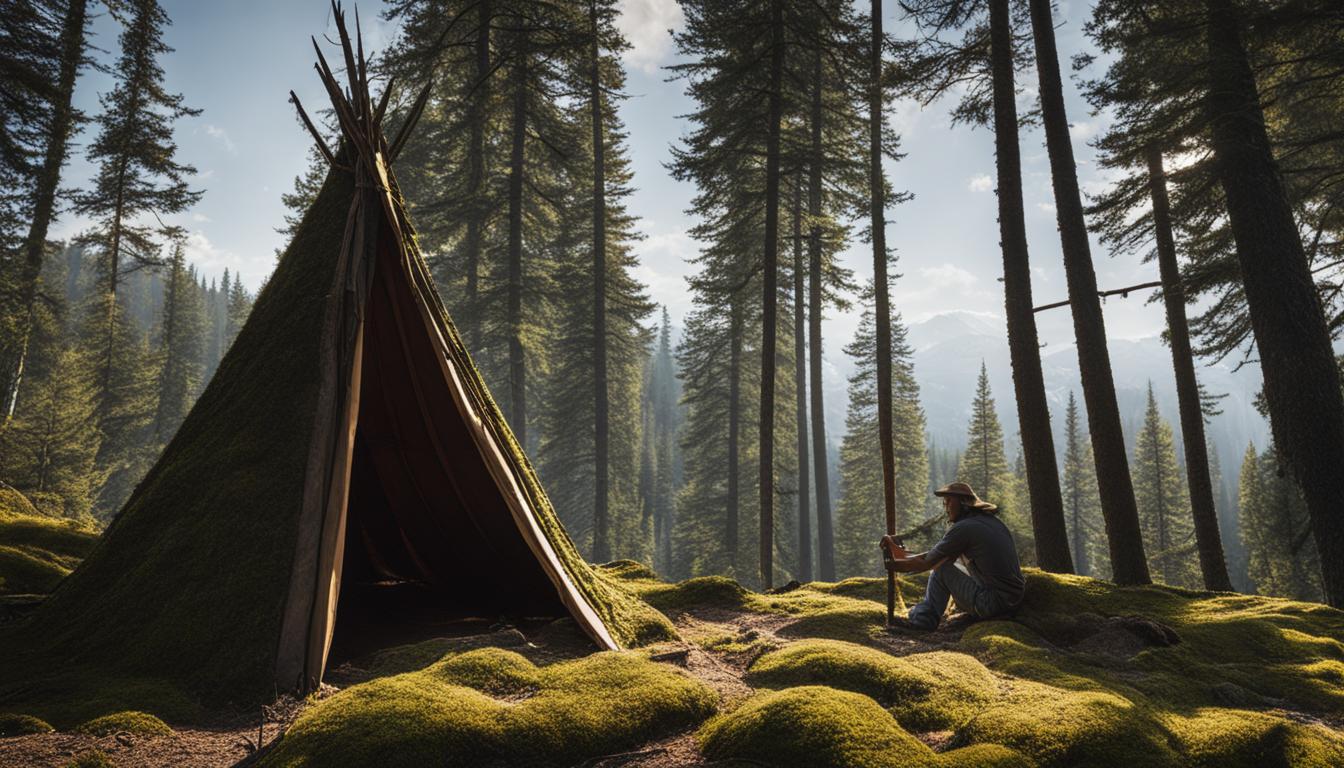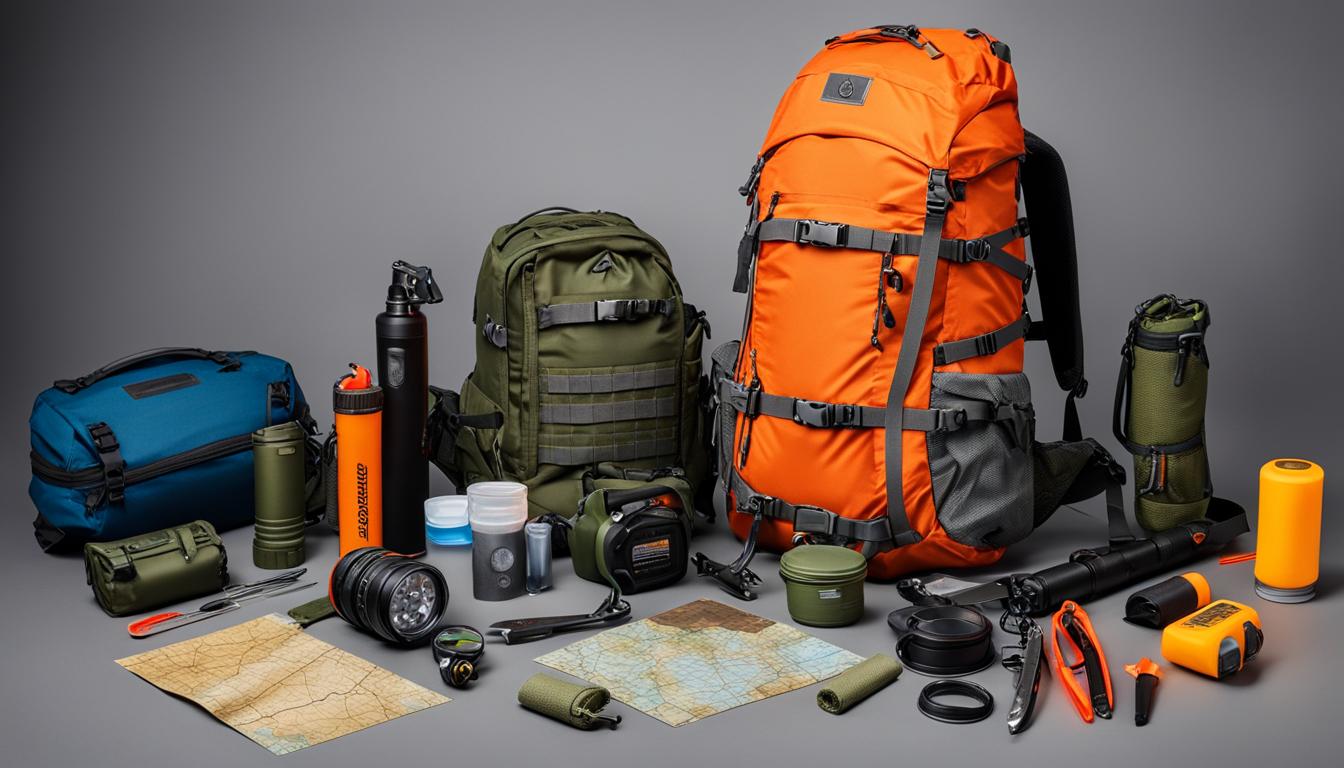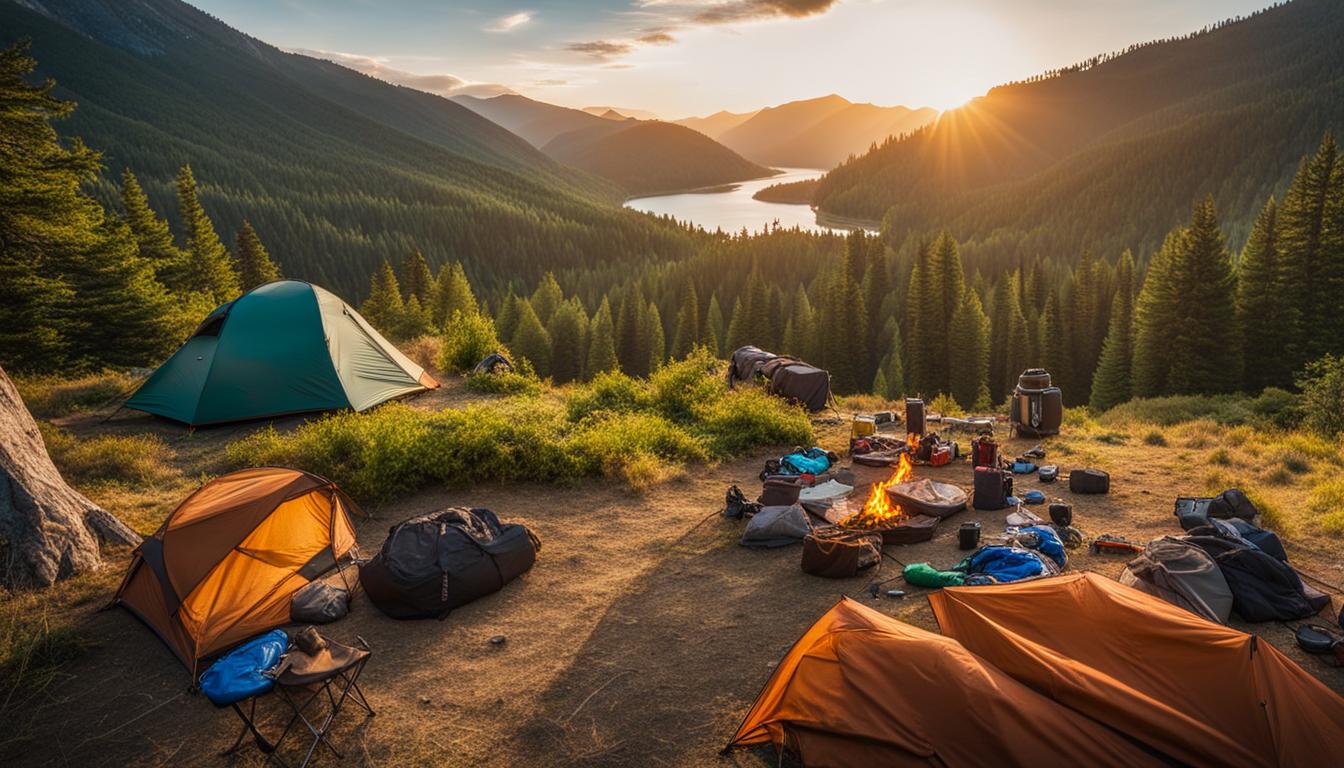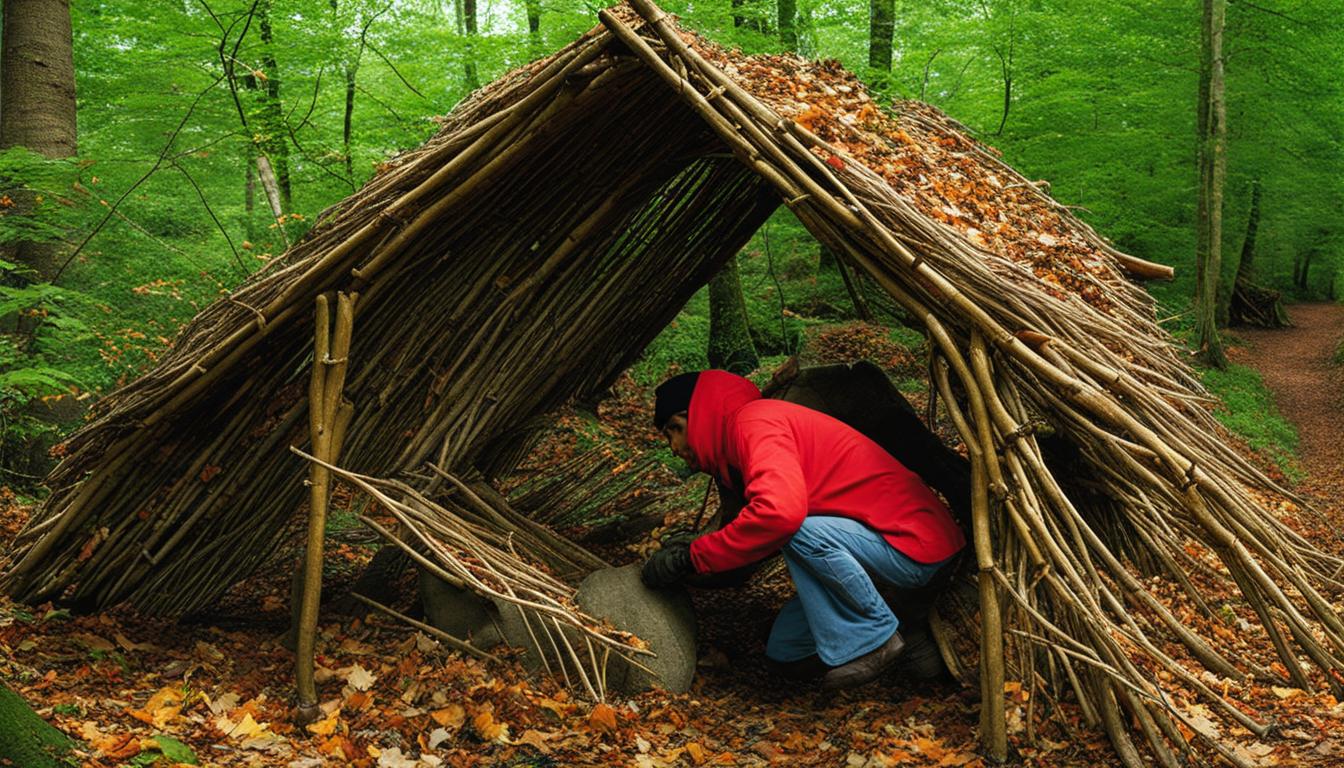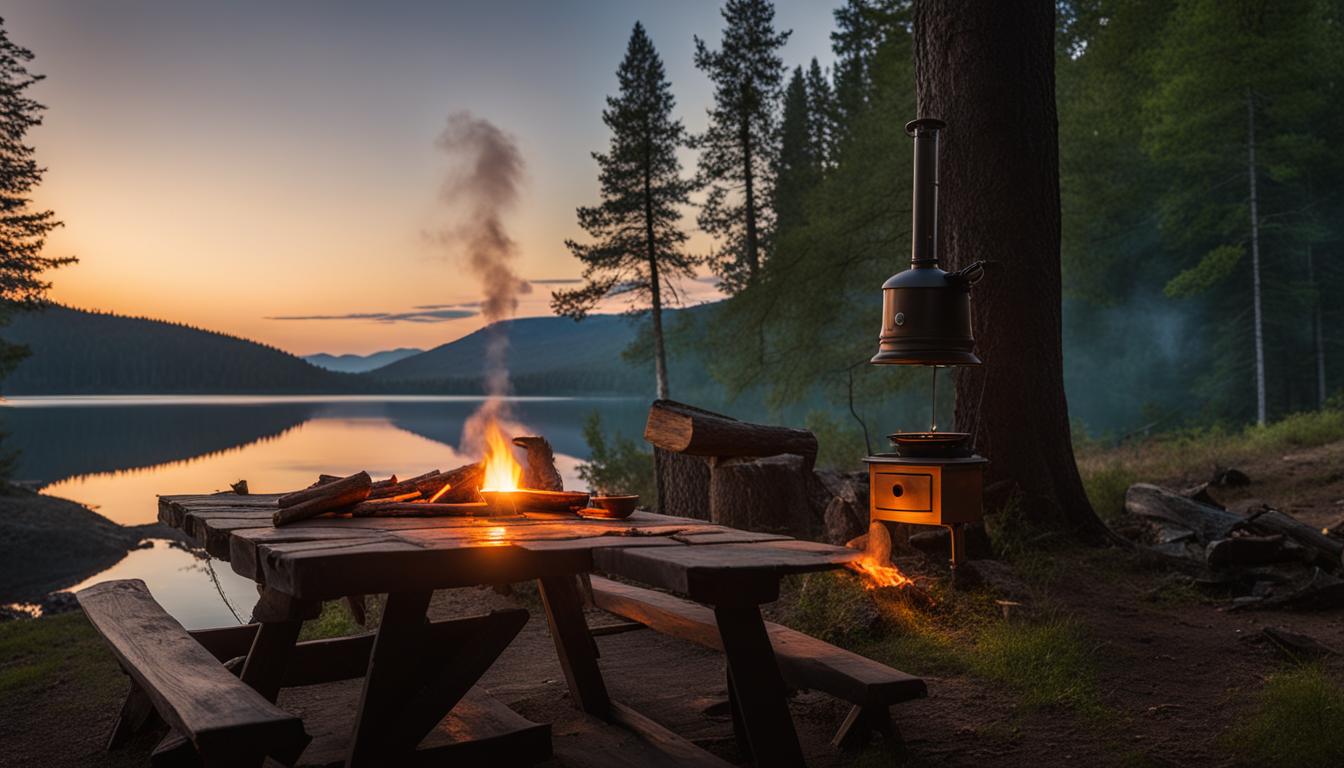Navigating through the wilderness can be a frightening ordeal, however, by arming yourself with the appropriate information and readiness, you can boost your odds of making it out alive. This article compiles crucial wilderness survival pointers from trusted sources to aid in keeping you secure while outdoors. Whether you’re a seasoned explorer or a novice, these suggestions will provide you with the essential abilities and tactics needed to navigate unforeseen circumstances in the wilderness.
Key Takeaways:
- Prepare a survival kit with essential supplies such as water, food, flashlights, and a first aid kit.
- Stay calm and stay put, avoiding aimless wandering that can make it harder for search teams to locate you.
- Stay hydrated, rest when needed, and dress in layers to prioritize your well-being.
- Stay visible in open areas and use landmarks to aid search and rescue efforts.
- Adapt your strategies based on your environment and situation, and always follow local officials’ instructions.
Stay Calm and Stay Put: The First Line of Defense
When you find yourself lost in the woods, it’s crucial to stay calm and stay put. Wandering aimlessly can increase the chances of getting further lost and make it more difficult for search teams to find you. Instead of panicking, take a moment to gather your thoughts and assess your situation. By staying calm, you’ll be able to think more clearly and make rational decisions that can help ensure your safety.
Remember to use signaling techniques to attract attention. Whistles, mirrors, and flashlights are effective tools for signaling search teams. By using these methods and making yourself visible, you increase the likelihood of being located quickly. It’s also essential to inform someone about your plans and estimated return time before heading into the wilderness. This way, if you don’t return as scheduled, search teams can be alerted and begin their efforts to find you.
Staying calm and staying put should be your first line of defense when you realize you’re lost. By doing so, you not only increase your chances of being found but also conserve your energy and avoid unnecessary risks. Remember, panic is your enemy in an outdoor survival situation.
Stay Calm and Stay Put: The First Line of Defense
| Stay Calm | Stay Put |
|---|---|
| Remain calm to think clearly | Avoid wandering aimlessly |
| Assess the situation | Use signaling techniques to attract attention |
| Stay focused on your survival | Inform someone about your plans |
| Conserve energy and avoid unnecessary risks | Wait for help to arrive |
Stay calm and stay put should be your mantra when faced with being lost in the wilderness. These simple actions can make all the difference in ensuring your safety and increasing your chances of being found. Remember, help is on its way, and by staying put, you’ll be making it easier for search teams to locate and rescue you.
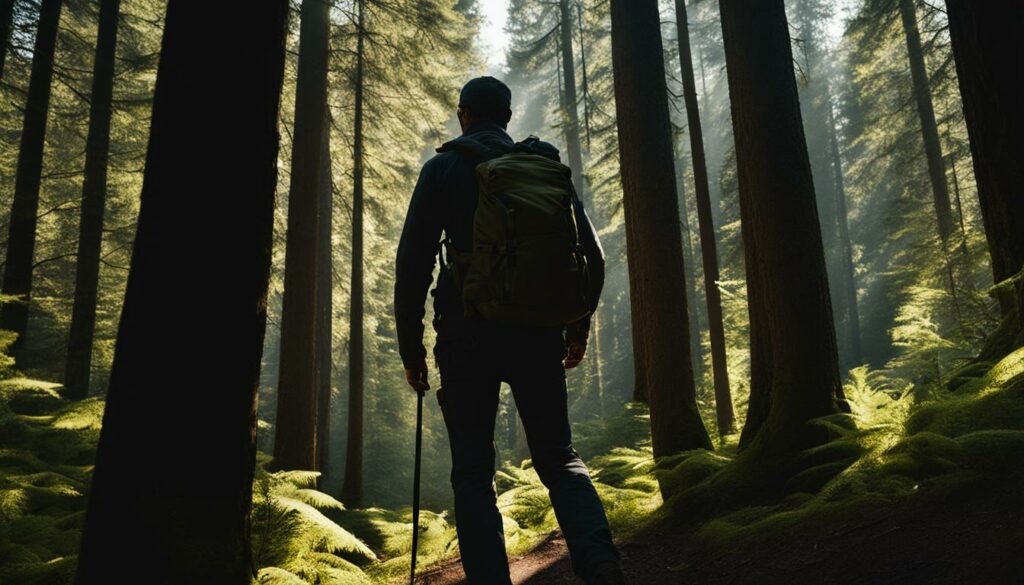
Carry Essential Supplies: Be Prepared for the Worst
When venturing into the wilderness, it’s crucial to be equipped with essential supplies to ensure your safety and well-being. A well-prepared survival kit can make a significant difference in your ability to survive unexpected situations. Here are some essential items to include in your survival kit:
| Item | Description |
|---|---|
| Water | Carry an ample supply of clean drinking water to stay hydrated. |
| Food | Pack non-perishable, high-energy snacks such as energy bars or nuts. |
| Flashlights | Illuminate your surroundings during low-light conditions. |
| First Aid Kit | Be prepared to treat minor injuries with basic medical supplies. |
| Emergency Blanket | Stay warm and protected from the elements with a lightweight emergency blanket. |
| Whistle | Use a whistle to signal for help or attract attention. |
| Multi-tool | A versatile tool with various functions like cutting, opening, and fixing. |
Additionally, if you have any specific health conditions, be sure to pack any necessary medications to manage your well-being. Remember, relying solely on a cell phone is not sufficient, as it may not have a signal in remote areas or could run out of battery. It’s essential to have these essential supplies readily available to increase your chances of surviving in the wilderness.

Stay Visible and Use Landmarks: Aid Search and Rescue Efforts
When you find yourself lost in the wilderness, it’s essential to stay visible and utilize landmarks to aid search and rescue efforts. By following these tips, you can increase your chances of being found quickly and safely.
Stay in Open Areas and Avoid Dense Vegetation
When moving to find help, it’s crucial to stay in open areas where you can be easily spotted. Avoid dense vegetation or steep terrain that may impede your movement and visibility. By staying in the open, you increase your chances of being seen by search teams or passing individuals who can offer assistance.
Follow Waterways and Use Landmarks for Navigation
Waterways, such as rivers or streams, can often lead to civilization or people who can help. If possible, try to follow these natural paths as you navigate your way back to safety. Additionally, if you have a map, identify landmarks in your surroundings and use them as reference points for navigation. Landmarks can be distinguishing features like mountains, rock formations, or prominent trees that can help you stay on track.
Carry a Map and Compass
Always carry a map and compass when venturing into unfamiliar territory. These tools can provide you with valuable information about your surroundings and help you navigate your way back to safety. Familiarize yourself with basic map reading skills and how to use a compass, as they can be vital in finding your way out of the wilderness.
| Stay Visible and Use Landmarks | Tips |
|---|---|
| Stay in Open Areas | Avoid dense vegetation or steep terrain that may impede movement and visibility. |
| Follow Waterways | Waterways can lead to civilization or people who can offer assistance. |
| Use Landmarks for Navigation | Identify landmarks in your surroundings and use them as reference points for navigation. |
| Carry a Map and Compass | Always have a map and compass to navigate and find your way back to safety. |
By staying visible and utilizing landmarks, you enhance your chances of being located and rescued. Remember to remain calm and informed, using your survival skills and resources to increase your chances of surviving until help arrives.
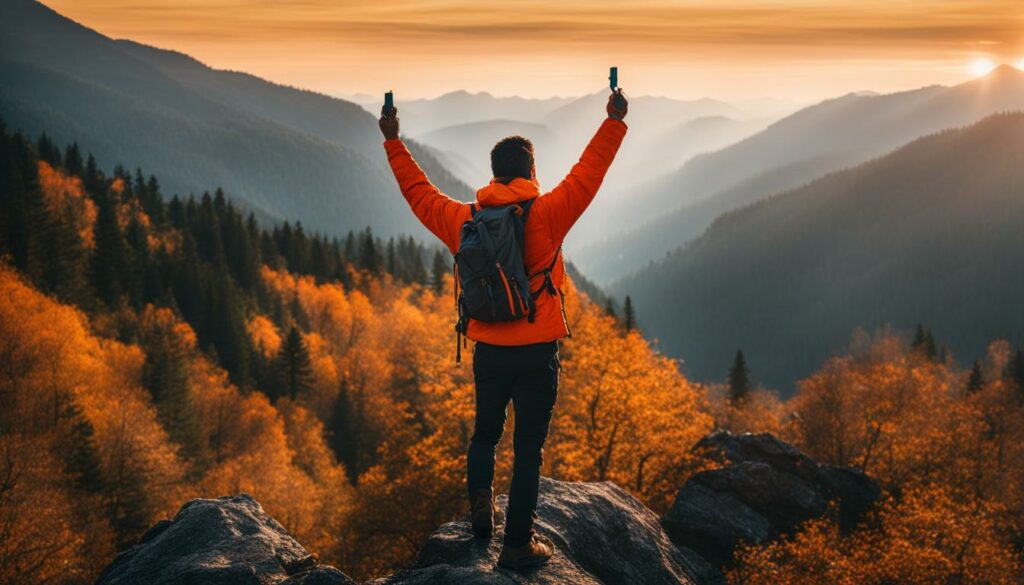
Stay Hydrated and Stay Warm: Prioritize Your Well-being
When you find yourself in a survival situation outdoors, it’s vital to prioritize your well-being. This means ensuring you stay hydrated and maintain a comfortable body temperature to prevent hypothermia. By following these simple guidelines, you can increase your chances of survival and stay safe while waiting for help to arrive.
Staying Hydrated
Hydration is crucial for your body to function properly, especially in a survival situation. Make sure to drink water regularly to prevent dehydration. If you don’t have access to clean water sources, use your survival kit to purify water or collect rainwater. Remember to conserve water and ration it wisely to last until help arrives.
Rest and Conserve Energy
In a survival situation, it’s important to rest and conserve your energy. Avoid unnecessary physical exertion, as it can lead to exhaustion and disorientation. Take breaks and find a safe location to rest. By conserving your energy, you’ll be better equipped to make rational decisions and handle any challenges that come your way.
| Tip | Key Point |
|---|---|
| Dress in Layers | Layer your clothing to trap heat and regulate body temperature. This helps prevent hypothermia, even in mild weather conditions. |
| Emergency Blanket | Carry an emergency or “space” blanket in your survival kit. These lightweight and compact blankets provide excellent insulation and protection against the elements. |
| Positive Mindset | Maintaining a positive mindset can boost morale and help you stay focused during difficult times. Use positive self-talk and visualization techniques to stay mentally strong. |
“Staying hydrated and conserving energy are essential for survival in the outdoors. By dressing in layers and using an emergency blanket, you can stay warm and prevent hypothermia. Remember to maintain a positive mindset – it can make all the difference in challenging situations.” – Outdoor Survival Expert
By prioritizing your well-being and following these guidelines, you can increase your chances of survival in a wilderness or outdoor emergency. Remember to stay hydrated, rest when needed, and conserve your energy. Dress in layers and use emergency blankets to stay warm. Finally, maintain a positive mindset to stay mentally strong and resilient. Your well-being is crucial, so take care of yourself while waiting for help to arrive.
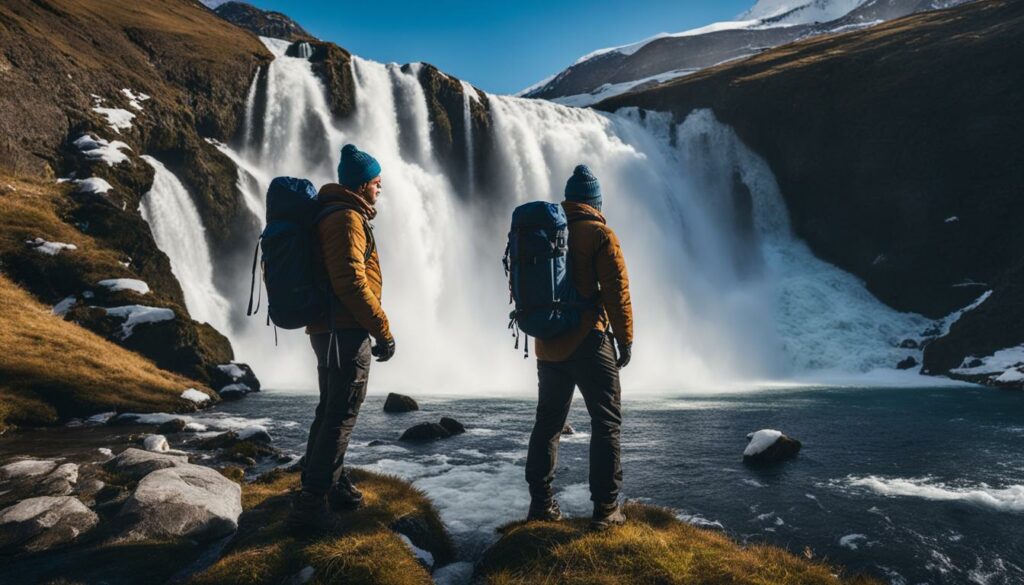
Adapt to your Environment: General Guidelines for Survival
When faced with a survival situation, it’s essential to adapt to your environment and make decisions based on the specific circumstances you find yourself in. These general guidelines can help you prioritize your safety and increase your chances of survival.
Prioritize Safety and Follow Instructions
- Always prioritize your safety above all else. Assess the situation and identify potential risks and hazards.
- If local officials or search and rescue teams are involved, follow their instructions and guidance. They have the necessary expertise and resources to assist you.
- Be open to adapting your plans and strategies based on the guidance provided.
Assess and Understand Your Environment
- Take time to assess your surroundings and understand the unique features of your environment.
- Identify potential sources of food, water, and shelter in your immediate vicinity.
- Be aware of any local wildlife or natural hazards that could pose a threat to your safety.
Use Available Resources
- Make use of any resources or tools you have available to you. Improvise and adapt as needed.
- If you have a survival kit or specific equipment, familiarize yourself with its contents and know how to use them effectively.
- Utilize natural resources and materials in your environment to meet your immediate needs.
Remember, these guidelines are general and may need to be modified based on the specific situation you find yourself in. Adaptation, resourcefulness, and a calm mindset are key to increasing your chances of survival in any environment. Stay safe, stay vigilant, and prioritize your well-being above all else.
| Survival Tip | Description |
|---|---|
| Stay Calm and Assess | Remaining calm allows you to assess the situation and make rational decisions. |
| Prioritize Safety | Your safety should always be the number one priority in a survival situation. |
| Follow Instructions | If local officials or search and rescue teams are present, follow their instructions and guidance. |
| Understand Your Environment | Gaining an understanding of your surroundings helps you make informed choices. |
| Use Available Resources | Make the most of the resources and tools you have at your disposal. |
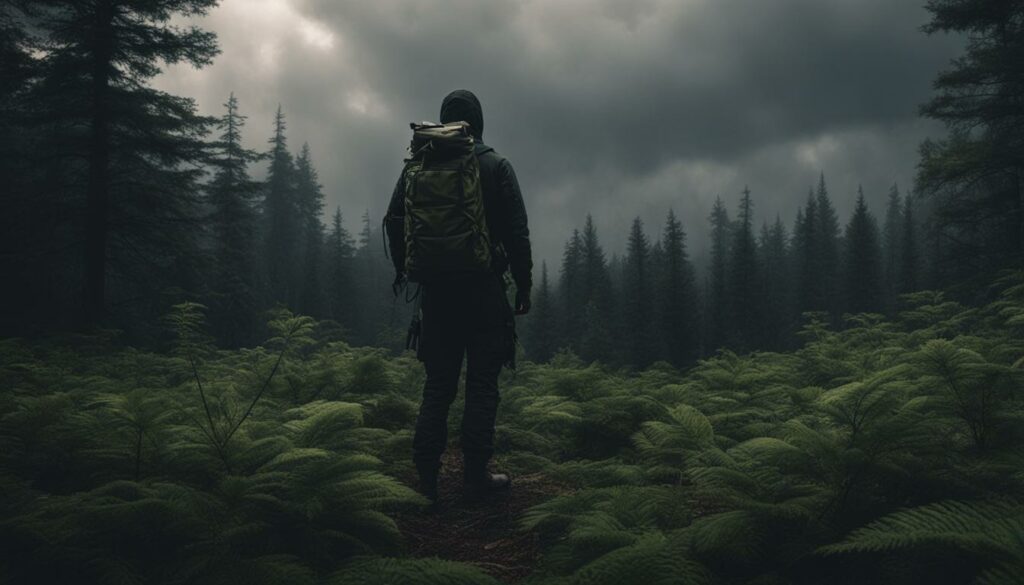
Additional Resources for Outdoor Safety
When it comes to outdoor safety, it’s important to have access to reliable resources that can enhance your knowledge and preparation. Here are some additional resources that can provide valuable information and guidance:
West Virginia Department of Natural Resources
The West Virginia Department of Natural Resources offers a wealth of information for outdoor enthusiasts. Their website provides details on hunting, fishing, camping, and other recreational activities, as well as important safety tips and regulations. You can find up-to-date information on wildlife management areas, learn about the state’s beautiful parks and forests, and access helpful tools and resources for outdoor adventures.
West Virginia Division of Forestry
The West Virginia Division of Forestry is another valuable resource for outdoor safety. Their website provides information on wildfire prevention, tree care, and forest management. They also offer educational resources on outdoor safety and conservation, making it a valuable source of knowledge for those venturing into the wilderness.
Lost Person Behavior guide
The Lost Person Behavior guide is a comprehensive reference tool for search and rescue operations. It provides insights into the behavior and thought processes of lost individuals, helping search teams effectively plan and execute rescue missions. By understanding how lost persons typically behave in different environments, search and rescue teams can optimize their efforts and improve their chances of locating individuals more rapidly.
Outdoor Safety Institute
The Outdoor Safety Institute is dedicated to promoting outdoor safety education and training. They offer a wide range of resources, including courses, workshops, and certification programs, to help individuals develop essential skills for surviving in the wilderness. Their expert instructors provide practical advice and hands-on training to ensure that outdoor enthusiasts are well-prepared for any situation they may encounter.
National Association for Search and Rescue
The National Association for Search and Rescue (NASAR) is a leading organization in the field of search and rescue. They provide valuable resources and training opportunities for search and rescue professionals as well as helpful information for the general public. Their website offers access to publications, guidelines, and educational materials that can enhance your understanding of search and rescue techniques and procedures.
United States Forest Service
The United States Forest Service plays a vital role in managing and protecting our national forests and grasslands. Their website provides information on recreational activities, camping regulations, and safety guidelines. They also offer resources on wildfire prevention and management, ensuring that outdoor enthusiasts can enjoy their adventures in a safe and responsible manner.
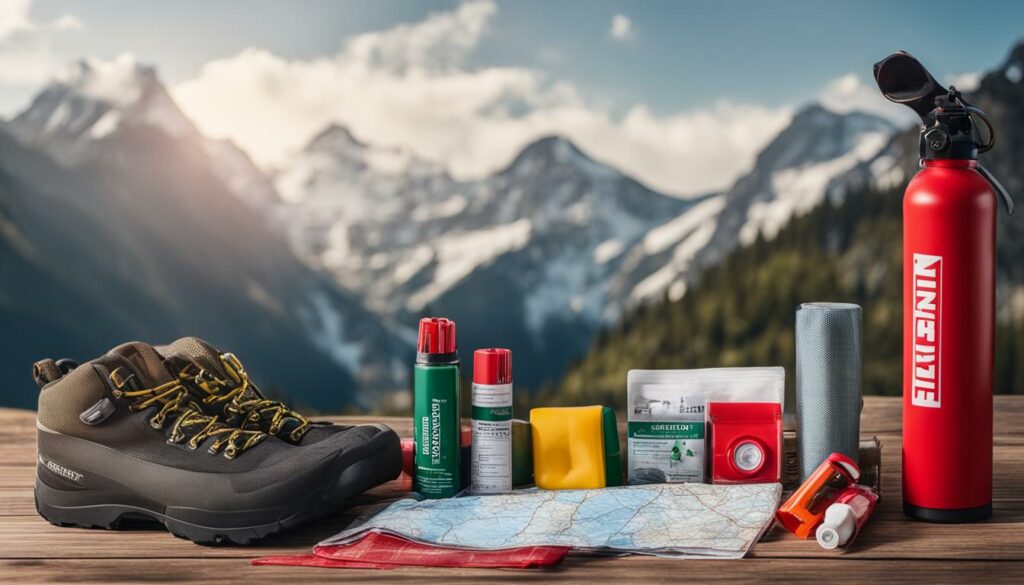
Video: A Real-Life Search and Rescue Success Story
Watch this inspiring video featuring the successful search and rescue of a hunter in Boone County, West Virginia, which earned Search and Rescue dog Soot and his handler the Hero Dog of the Year award in 2012. This heartwarming real-life story showcases the dedication and skills of search and rescue teams and the impact they can have on saving lives.
The video begins with the tense situation of a lost hunter in a dense forest, setting the stage for the high-stakes search and rescue mission. As the camera follows Soot and his handler, you can feel the anticipation and hope in the air. The determination and unwavering bond between Soot and his handler shine through as they tirelessly comb through the wilderness, using their specialized training and expertise to navigate the challenging terrain.
The climax of the video comes when Soot finally locates the missing hunter, leading to a joyous reunion between the hunter and his loved ones. The emotional impact of this uplifting rescue is palpable, serving as a powerful reminder of the invaluable role that search and rescue teams play in our society.
This heartwarming video captures the true essence of the search and rescue experience and highlights the vital contributions of dogs like Soot and their dedicated handlers. It serves as a testament to their unwavering commitment to saving lives and providing hope in the face of adversity.
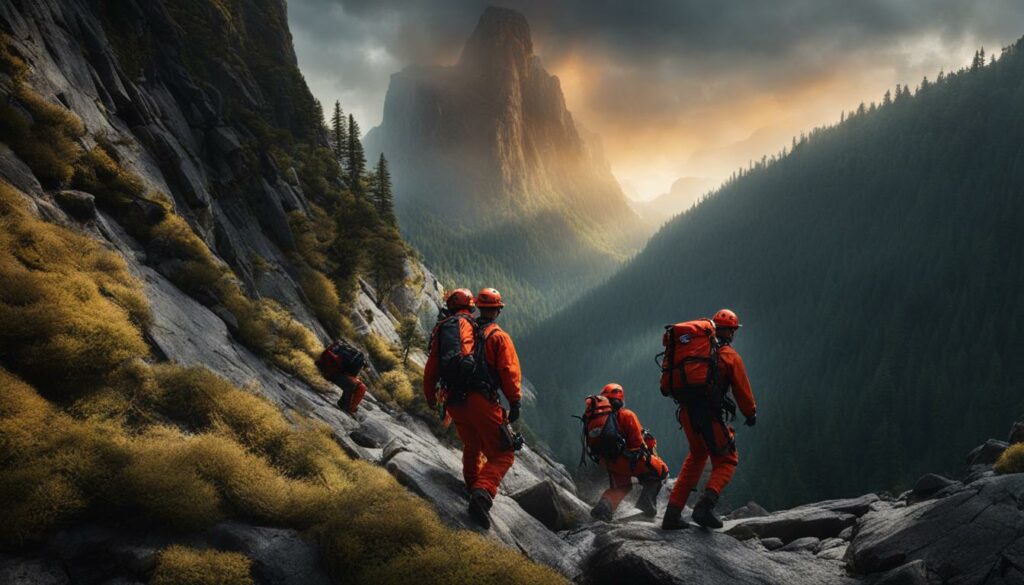
Book Recommendation: “Outdoor Survival” by Benjamin Sobieck
If you’re looking for a comprehensive guide to outdoor survival, consider reading “Outdoor Survival” by Benjamin Sobieck. This book provides practical advice and techniques for surviving in real-world situations, without relying on gimmicks or expensive gear. Sobieck’s expertise, gained from his experience as an editor for a survival magazine and living through a weeklong wilderness survival situation, makes this book a valuable resource for anyone looking to enhance their survival skills.
Sobieck’s “Outdoor Survival” covers a wide range of topics, including essential supplies and equipment, navigation techniques, first aid, and shelter building. The book offers step-by-step instructions, clear illustrations, and insightful tips to help readers prepare for and handle various outdoor emergencies. Whether you’re an experienced adventurer or a novice looking to explore the wilderness, this book acts as a detailed manual to help you stay safe and confident in any outdoor situation.
In addition to practical advice, “Outdoor Survival” also includes inspiring stories of real-life survival situations and the lessons that can be learned from them. The book emphasizes the importance of mindset and preparedness, providing readers with the knowledge and skills to overcome challenges and make informed decisions when faced with unexpected circumstances.
| Key Features | Benefits |
|---|---|
| Comprehensive coverage of essential survival topics | Readers gain a wide range of knowledge and skills |
| Practical advice and step-by-step instructions | Easy-to-follow guidelines for immediate application |
| Inspiring real-life stories | Motivating examples of survival and resilience |
| Expert author with firsthand experience | Authoritative and reliable information |
Overall, “Outdoor Survival” is a must-read for anyone interested in outdoor activities and wilderness exploration. By equipping yourself with the knowledge and skills shared in this book, you’ll be better prepared to handle unexpected situations and increase your chances of staying safe in the great outdoors. So, grab a copy of “Outdoor Survival” and embark on your next adventure with confidence!
Conclusion
As outdoor enthusiasts, it is important to prioritize safety and be prepared for unexpected situations. By following these essential survival tips, you can enhance your wilderness survival skills and ensure outdoor safety. Remember to stay calm and stay put when you find yourself lost, utilizing signaling techniques to attract attention while waiting for help to arrive.
Carrying essential supplies such as water, food, flashlights, and a first aid kit is crucial for emergency preparedness. Stay visible by moving through open areas and utilizing landmarks for navigation purposes. Prioritize your well-being by staying hydrated, conserving energy, and dressing in layers to prevent hypothermia.
Adapting to your environment and seeking additional resources for outdoor safety can further enhance your survival skills. The West Virginia Department of Natural Resources and the West Virginia Division of Forestry offer valuable information, while the Lost Person Behavior guide and the Outdoor Safety Institute provide in-depth knowledge. Remember, with the right knowledge and preparation, you can confidently explore the wilderness while staying safe.
What Are Some Essential Outdoor Survival Tips to Keep in Mind?
When venturing into the wilderness, it’s crucial to have an essential outdoor survival guide. Remember to pack necessary items like a first aid kit, water purification tools, and fire-starting materials. Knowing how to find or build shelter, locate food sources, and signal for help are also crucial survival skills.
FAQ
What should I do if I get lost in the wilderness?
Stay calm and stay put. Wandering aimlessly can make it harder for search teams to find you. Use signaling techniques to attract attention and inform someone about your plans.
What supplies should I carry for outdoor survival?
Essential supplies include water, food, flashlights, a first aid kit, a multi-tool, an emergency or “space” blanket, a whistle, and any necessary medications.
How can I navigate myself back to safety?
Stay in open areas, follow waterways, and use a map and compass to identify landmarks and guide your way.
How can I stay hydrated and warm in the wilderness?
Conserve energy, dress in layers, and use your survival kit, including an emergency or “space” blanket, to stay warm. Stay hydrated and well-rested to avoid exhaustion and hypothermia.
Are these survival tips applicable to all situations?
These tips are general guidelines that may need to be adjusted based on the specific environment and situation. Follow instructions from local officials and search and rescue teams.
Where can I find additional resources for outdoor safety and survival?
Valuable resources include the West Virginia Department of Natural Resources, West Virginia Division of Forestry, Lost Person Behavior guide, Outdoor Safety Institute, National Association for Search and Rescue, and United States Forest Service.
Can you recommend a book on outdoor survival?
“Outdoor Survival” by Benjamin Sobieck is a comprehensive guide that provides practical advice and techniques for real-world survival situations.
What is the importance of search and rescue efforts?
Search and rescue efforts, like the real-life story featured in the video, can save lives and showcase the impact of these dedicated teams.
What is the conclusion of these survival tips?
By following these survival tips, you can increase your chances of staying safe and making it out of unexpected situations alive. Prioritize your well-being, adapt to your environment, and seek additional resources for further knowledge.

